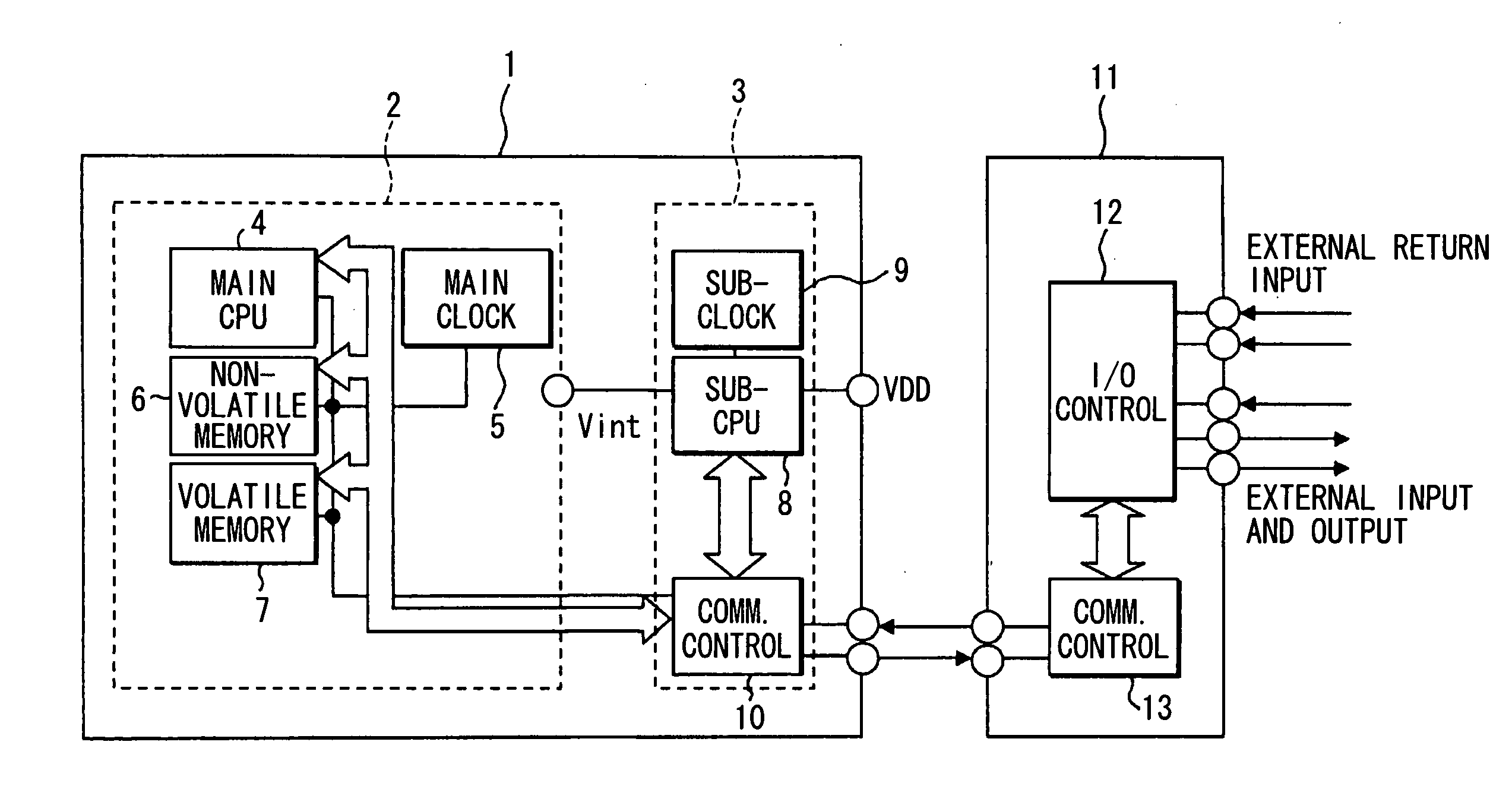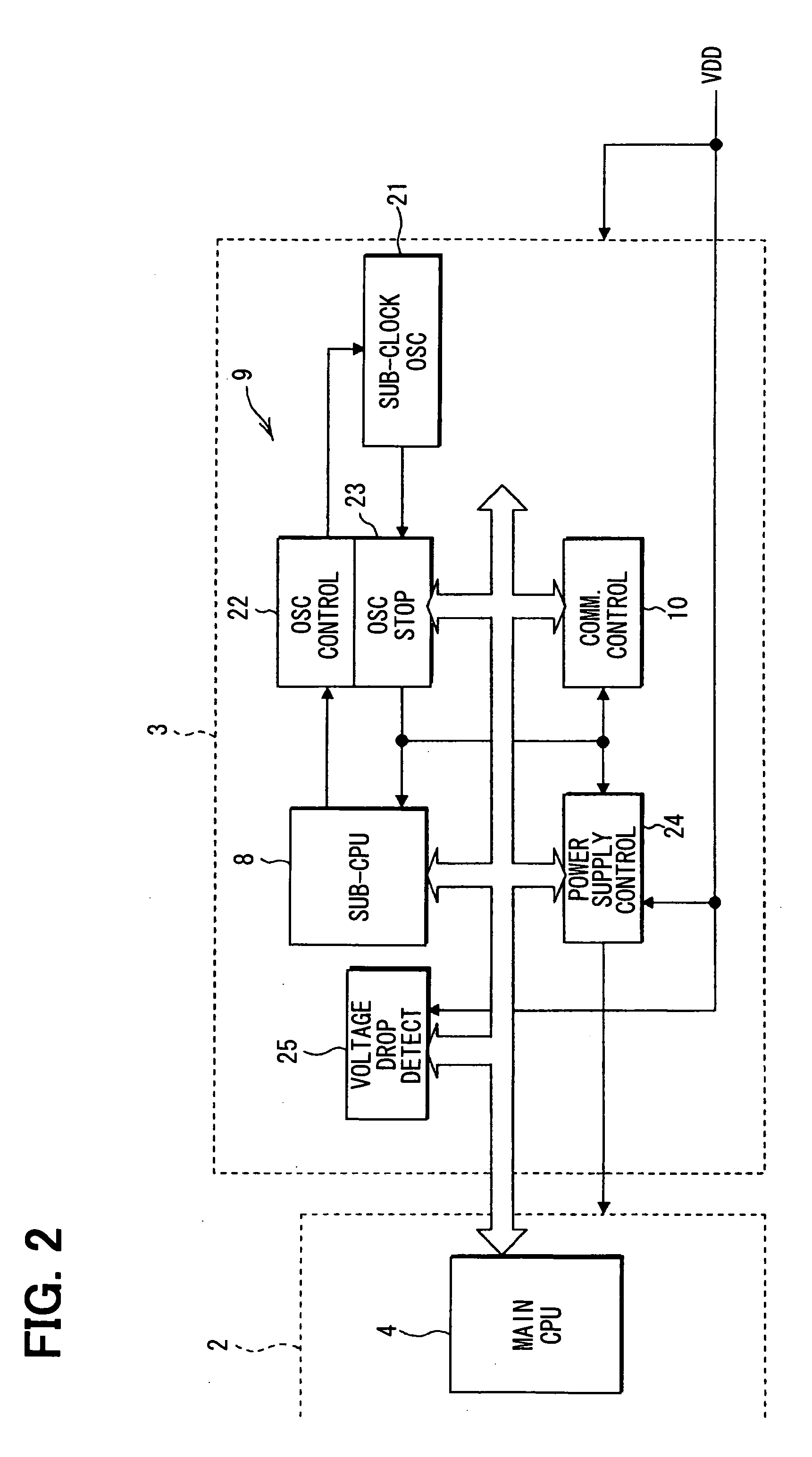Microcomputer system
a microcomputer and system technology, applied in the field of microcomputer systems, can solve problems such as difficulty in reducing power consumption, and achieve the effect of reducing power consumption
- Summary
- Abstract
- Description
- Claims
- Application Information
AI Technical Summary
Benefits of technology
Problems solved by technology
Method used
Image
Examples
first embodiment
[0025]Referring first to FIG. 1, a microcomputer system 1 is applied for the electronic control of, for example, an in-vehicle device (not shown). The microcomputer system 1 includes a main microcomputer (main MC or main CPU section) 2, and a sub-microcomputer (sub-MC or sub-CPU section) 3.
[0026]The main microcomputer 2 includes a main CPU 4, a main clock section 5, a (main) nonvolatile memory element 6, and a (main) volatile memory element 7. The main CPU 4 operates in response to a main clock signal having a frequency of, for example, about 100 MHz, which is supplied from the main clock section 5. The main CPU 4 is, for example, a 32-bit CPU, and executes a main portion of the processing in the microcomputer system 1. The main clock section 5 multiplies a reference clock signal that is output from an oscillator circuit having an external oscillator by a multiplier circuit although being not specifically shown, to generate a main clock signal.
[0027]The nonvolatile memory element 6 ...
second embodiment
[0062]Referring to FIG. 8, a microcomputer system 31 according to a second embodiment includes a main microcomputer (main MC or main CPU section) 32, a sub-microcomputer (sub-MC or sub-CPU section) 33, and a memory element section 34. The memory element section 34 is formed of a chip that makes the memory elements 6 and 7 separately from the main microcomputer 3. Those memory elements 6 and 7 are mounted on the main microcomputer 3 in the first embodiment. The memory element section 34 can be accessed from both of the main microcomputer 32 side and the sub-microcomputer 33 side.
[0063]The main microcomputer 32 includes a main CPU 35 and logic circuits 36 (36A to 36D, for example, gate array) which are peripheral circuits. Those logic circuits 36 also operate upon receiving the main clock signal.
[0064]The sub-microcomputer 33 includes a sub-CPU 37, a communication control section 38 and a power supply control section (power supply control circuit) 39. The sub-microcomputer 33 also inc...
PUM
 Login to View More
Login to View More Abstract
Description
Claims
Application Information
 Login to View More
Login to View More - R&D
- Intellectual Property
- Life Sciences
- Materials
- Tech Scout
- Unparalleled Data Quality
- Higher Quality Content
- 60% Fewer Hallucinations
Browse by: Latest US Patents, China's latest patents, Technical Efficacy Thesaurus, Application Domain, Technology Topic, Popular Technical Reports.
© 2025 PatSnap. All rights reserved.Legal|Privacy policy|Modern Slavery Act Transparency Statement|Sitemap|About US| Contact US: help@patsnap.com



